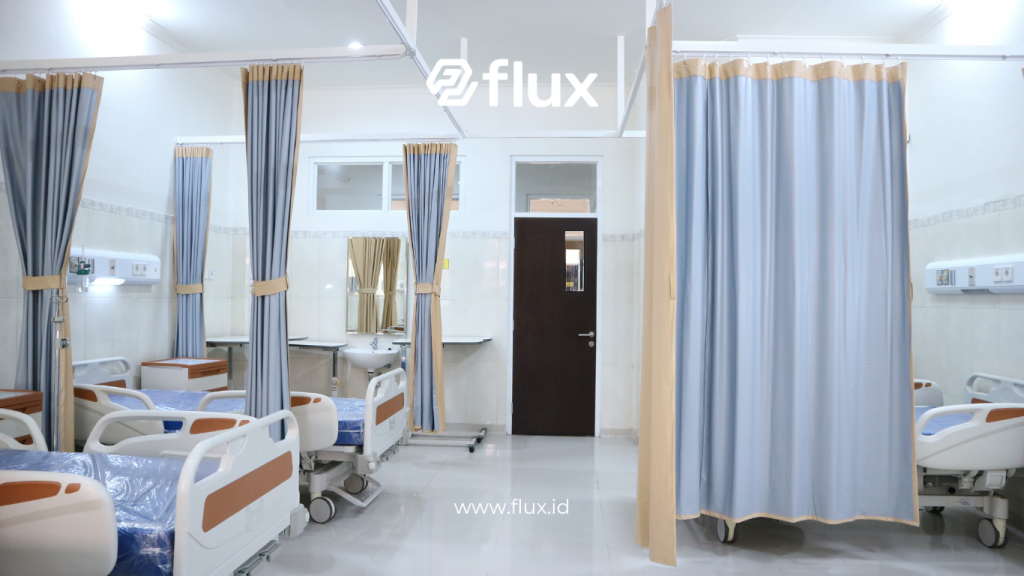Don't miss our holiday offer - 20% OFF!
Maintaining hospital cleanliness is crucial for ensuring patient health and safety. A clean and sterile environment prevents infections, enhances patient comfort, and meets stringent operational standards. With technological advancements, environmental sensors in hospitals have become essential tools in improving hospital cleanliness. This article will explain how these sensors work and the benefits they offer in maintaining hospital cleanliness.
Contents
The Role of Environmental Sensors in Hospitals

Read More : Energy Efficiency in Hospitals: Implementing IoT for Sustainability
Environmental sensors monitor various physical conditions in hospital environments, such as temperature, humidity, air quality, and surface cleanliness. Typically, these sensors connect to the hospital management system, providing real-time data for accurate decision-making.
Types of Environmental Sensors

Read More : Hospital: Optimal Energy Management through IoT
Hospitals use several types of environmental sensors, including:
- Air Quality Sensors: Monitor airborne particles, such as dust, pollutants, and microorganisms, which can impact the health of patients and staff.
- Temperature and Humidity Sensors: Maintain safe temperature and humidity levels to prevent bacterial and viral growth.
- UV Light Sensors: Ensure proper sterilization of surfaces using ultraviolet light.
- Room Pressure Sensors: Control pressure in isolation or operating rooms to prevent cross-contamination.
How Environmental Sensors Work

Environmental sensors detect changes in monitored parameters and send this data to a central system. Below is an explanation of how some commonly used sensors operate in hospitals:
Air Quality Sensors
Air quality sensors draw in air and analyze it using lasers or particle sensors. The system then uses this data to assess air quality in various rooms. When high pollution levels are detected, the system can automatically activate ventilation or alert staff to take cleaning actions.
Temperature and Humidity Sensors
These sensors continuously monitor the environment. If the temperature or humidity goes beyond the set limits, the system alerts the facility management team to make necessary adjustments. For example, maintaining the right temperature and humidity in operating rooms is crucial to preventing bacterial growth.
UV Light Sensors
UV light sensors verify that sterilization procedures using ultraviolet light have been performed correctly. These devices measure the intensity of UV light applied to surfaces to ensure they have been adequately sterilized.
Room Pressure Sensors
Room pressure sensors maintain the desired pressure in specific rooms, such as isolation or operating rooms. These devices detect pressure differences between the room and its surroundings, and the system adjusts ventilation to maintain the required pressure.
Benefits of Implementing Environmental Sensors in Hospitals

Read More : Energy Efficiency in Hospitals: Implementing IoT for Sustainability
Implementing environmental sensors in hospitals offers significant benefits in improving cleanliness and safety standards. Some key benefits include:
Infection Prevention
Continuous monitoring of air quality and surface cleanliness helps prevent infections in hospitals. For instance, air quality sensors detect harmful particles that may carry pathogens, enabling immediate action to address them.
Operational Efficiency
Environmental sensors enable automatic monitoring and control of environmental conditions, reducing the workload on staff in terms of maintenance and cleaning. Additionally, these automated systems can lower operational costs by optimizing energy use and other resources.
Compliance with Health Standards
Hospitals must adhere to strict standards and regulations related to cleanliness and safety. Environmental sensors help ensure all environmental parameters remain within permitted limits, making it easier for hospitals to comply with health authorities’ standards.
Patient Comfort
A clean and healthy environment is essential for patient comfort and safety. Environmental sensors ensure patients are not exposed to potentially harmful conditions, such as polluted air or uncomfortable temperatures, ultimately enhancing patient experience and satisfaction.
Reduced Risk of Human Error
Sensor-based automated systems minimize the risk of human error in maintaining hospital cleanliness. Sensors provide real-time data that can be acted upon immediately, allowing quicker and more accurate preventive measures.
Case Study: Environmental Sensors in Action

Read More : Marine Environment Monitoring with Water Pressure Sensors
Hospital X in Jakarta successfully implemented environmental sensors to improve its cleanliness standards. They adopted air quality and temperature sensors throughout their operating and inpatient rooms. After implementation, they reported a significant decrease in nosocomial infections and an increase in patient satisfaction.
Energy efficiency also improved, thanks to temperature sensors that more accurately regulated the HVAC system. The data generated by these sensors helped Hospital X meet audit requirements, reducing the risk of penalties and enhancing the hospital’s reputation.
Challenges in Implementing Environmental Sensors

Read More : The Impact of Waste Sensors on the Environmental Agency
While the benefits are numerous, implementing environmental sensors in hospitals comes with challenges. Some of the main challenges include:
Implementation Costs
Purchasing and installing environmental sensors can be costly, especially for hospitals with limited budgets. However, this investment can provide long-term returns through operational cost savings and increased patient safety.
Maintenance and Calibration
Environmental sensors require regular maintenance and calibration to function correctly. This can add to the workload and incur additional costs for the hospital. A clear maintenance plan is essential to ensure the sensors operate optimally.
Integration with Existing Systems
Integrating environmental sensors with existing hospital management systems may require complex modifications and adjustments. This challenge can be more significant if the existing system is outdated or incompatible with new technology.
Staff Training
Hospital staff need training to use and interpret the data generated by environmental sensors effectively. Although this training requires time and resources, it is crucial for the successful implementation of sensor technology.
Conclusion
Implementing environmental sensors in hospitals is a vital step in improving cleanliness and safety standards. These sensors not only assist in monitoring and maintaining optimal environmental conditions but also offer significant benefits in infection prevention, operational efficiency, and regulatory compliance. While there are challenges in adopting this technology, the long-term benefits are substantial.
As technology continues to advance, environmental sensors will become an integral part of hospital cleanliness management. Hospitals that embrace this technology will be better equipped to face future challenges and provide the best possible care for their patients.





